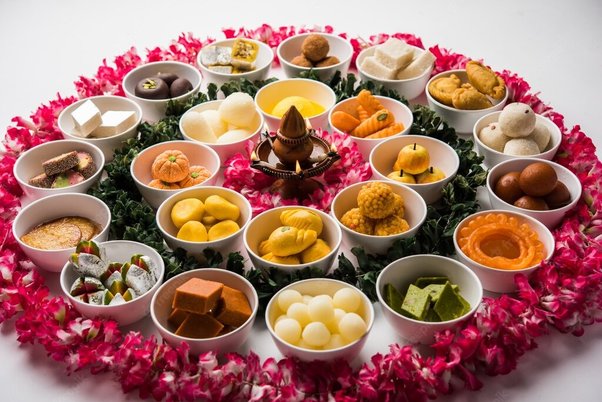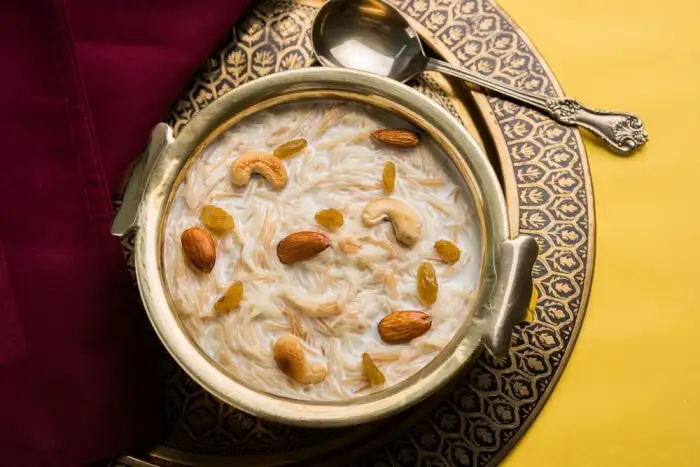Indian Sweets-A Culinary Journey through India’s Most Famous Sweets-24
Indian Sweets
India, a country rich in cultural diversity, is home to a wide variety of delectable and firmly traditional sweets. These Indian Sweets, which represent the nation’s culinary legacy, are an essential component of festivities, festivals, and everyday life.
From the snow-capped Himalayas to the tropical coastlines of the Indian Ocean, each region offers its unique spin on sweets, making them an integral feature of Indian gastronomy.

Furthermore, for general health, the age-old science of Ayurveda acknowledges the significance of balance and moderation in the consumption of sweets.
India experiences diverse climatic conditions, and the choice of sweets varies with the changing seasons.
Winter Delights:
The popular dish Gajar Ka Halwa, which is cooked with grated carrots, milk, sugar, and ghee, is created when delicious red carrots sprout in North India during the winter.
Follow Our Digiknowledge.co.in Page for Latest update about Bikes, Cars, Sports, , Life style and many more.
Sesame seeds are becoming common in many places throughout the winter months. Til Ladoo, a popular dish prepared with sesame seeds, jaggery, and ghee, is especially popular during festivals like Makar Sankranti.
Specialties for the Summer:
Aam Ras: The summer season brings out the mango, the king of fruits. During the Gudi Padwa festival and other summertime festivities, people in Western India eat aam ras, a sweet mango pulp.
Kulfi: Often seen on summer menus around the nation, this frozen dairy treat is similar to ice cream.

Monsoon Pleasures:
Jalebis are spiral-shaped, deep-fried sweets drenched in sugar syrup that are best enjoyed during the monsoon season. In India, people enjoy it on special occasions like Diwali and Raksha Bandhan.
Area wise specific Indian Sweets:
Northern India:
Ladoo: A common dessert for holidays like Diwali and Ganesh Chaturthi, this spherical confection is produced from a variety of ingredients, including chickpea flour, gramme flour, and semolina.
India’s south:
Mysore Pak: A thick, gram-flour fudge with Karnataka roots, Mysore Pak is frequently savoured during holidays like Dasara.
Western India:
Modak: Maharashtra is famed for Modak, a delicious dumpling filled with coconut, jaggery, and almonds, usually dedicated to Lord Ganesha during Ganesh Chaturthi.
East India
Rasgulla: Sweet treats like spongy cottage cheese balls drenched in sugar syrup are Bengal’s gift to the candy world. When festivities and lucky days are approaching, it is an absolute must.

Festival-wise Specific Indian Sweets
Diwali
India’s favorite’s Diwali treat is barfi, a rich, fudge-like confection that comes in flavours like coconut, almond, and pistachio.
Holi:
Gujiya: During the festival of color’s, North Indian sweet dumplings packed with khoya (reduced milk), dry fruits, and coconut are relished.
The Raksha Bandhan:
Rasmalai: Saffron-infused milk soaking in soft paneer dumplings, representing the sweet relationship between brothers during Raksha Bandhan.
Indian Sweets of Ayurvedic Importance:
The ancient Indian medical system known as Ayurveda places a strong emphasis on a wholistic approach to treatment that takes into account a person’s lifestyle, environment, and constitution.
In Ayurveda, sweets have a special place provided they are eaten carefully and in moderation.
The Dosha Balance
Individuals are classified into three doshas by Ayurveda: Vata, Pitta, and Kapha. When made properly and in moderation, sweets can soothe upset doshas.
Fillings:
Nuts, ghee, milk, and other substances found in sweets provide vital nutrients and support both physical and mental health.
Benefits to the Digestive System:
Some spices, such as saffron and cardamom, which are used in Indian sweets, improve intestinal health and facilitate digestion.
Harmony of the Mind and Body:
The relationship between the mind and body is acknowledged by Ayurveda. In a tranquil setting, indulging in a sweet treat can help to mind.
Finally
Indian sweets are a monument to the nation’s rich culinary heritage because of their seasonal variations, regional diversity, and cultural significance. Enjoying these delicious delights during festivals and celebrations requires an appreciation of the Ayurvedic wisdom that dictates how they should be consumed.
In addition to promoting physical health, moderation and attention when consuming sweets also lend a delightful element to Indian culture.
What is special about Indian sweets?
Mithai, or Indian sweets, are renowned for their distinctive tastes and ingredients. They frequently contain a range of nuts, dairy products including khoya and ghee, and spices. Indian sweets have unique and complex flavors that are a result of these ingredients and ancient cooking techniques.
Why has Indian sweets popular globally?
This is primarily because sweets are as diverse, plentiful, and deeply symbolic on the Indian Subcontinent as they are in any other nation. India’s relationship with sweets dates back thousands of years, in addition to its rich cultural past. At approximately 500 BC, Indians became the first people to refine sugar.
Which Indian sweet is world famous?
A couple of days ago, the Indian desserts Phirni and Kheer were listed as the top ten puddings in the world. Taste Atlas, a well-known culinary and travel guide, announced the rankings. Indian sweets come in a wide variety, with each region having its own specialties.




